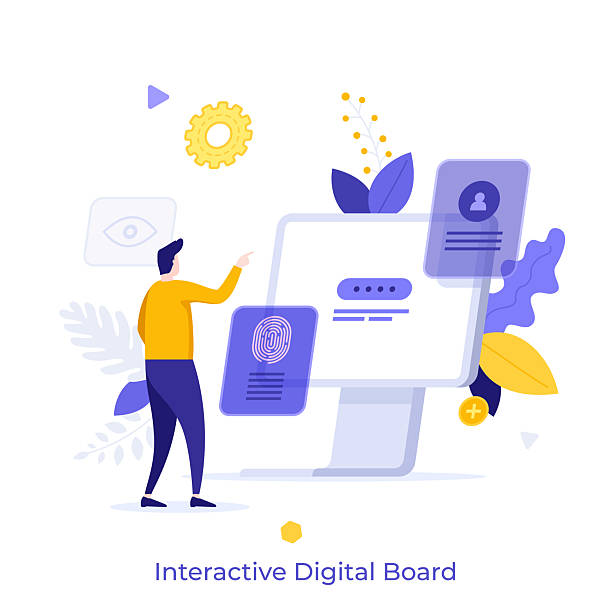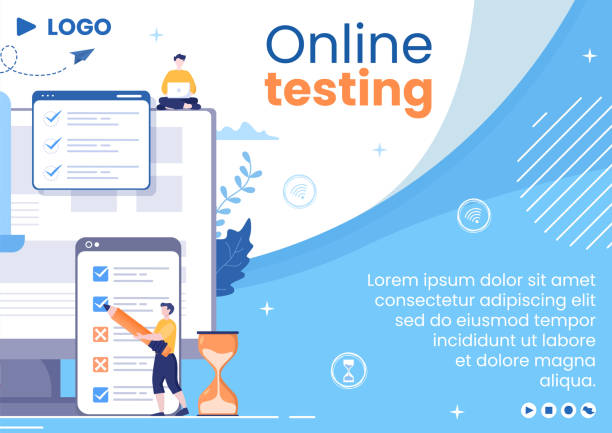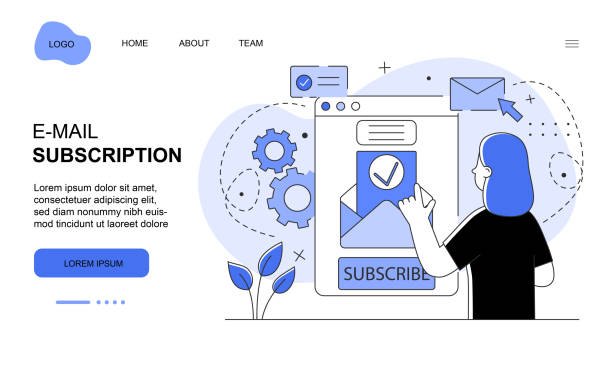Introduction to Responsive Web Design

In today’s world, where digital devices are evolving at a staggering pace, Responsive Web Design is no longer a luxury choice, but an undeniable necessity.
This web design approach allows websites to adapt their #appearance and #functionality to the screen size, platform, and orientation of the user’s device.
The main goal of responsive design is to provide a seamless and optimized user experience, whether on large desktop computers, laptops, tablets, or small smartphones.
This is a fundamental paradigm shift in how we think about web design, moving from static desktop design towards a flexible and fluid approach.
The content of this section is an explanatory and educational content that provides the foundation for a better understanding of this vital concept.
With the increasing diversity of devices, including the World Wide Web, the need for approaches like responsive design is felt more than ever.
This design style utilizes core HTML and CSS components to ensure that your website is #accessible and #efficient for every user, regardless of the device they use.
In fact, this is not just a technical technique, but a philosophy that places special emphasis on user satisfaction and #improving #user experience.
This concept forms the basis for all our subsequent discussions about the importance and implementation of mobile-friendly design.
Are your online sales not as expected? With Rasawweb, solve the problem of low sales and poor user experience forever!
✅ Increase visitor-to-customer conversion rate
✅ Create an enjoyable user experience and increase customer trust
⚡ Act now for a free consultation!
Why is Responsive Design a Necessity?

In the current era, where smartphones and tablets have become an inseparable part of our daily lives, ignoring responsive web design means losing a significant portion of potential audiences.
Today, more than half of web traffic comes from mobile devices.
Therefore, having a website that does not display correctly on all these devices can lead to a poor user experience, high bounce rates, and ultimately, loss of customers.
This section analytically and explanatorily addresses the main reasons why a responsive website is a necessity.
Search engines like Google prioritize mobile-optimized websites in their rankings, which is a strong reason to invest in responsive design.
Websites that offer a poor mobile user experience may drop in search results and not be seen.
Furthermore, brand consistency and business credibility also increase by providing a seamless user experience across all devices.
Users expect to be able to access your content easily and without issues on any device they choose.
Did you know that 90% of users leave a website that doesn’t work well on mobile? This is a thought-provoking content that makes you think.
Therefore, investing in this area is not just a technical measure, but a smart business strategy that can contribute to your long-term growth and success.
Responsive web design is a way to stay competitive and provide the best possible experience for users.
Key Principles in Implementing Responsive Design

The implementation of responsive web design is built upon three fundamental principles that every web designer must master: Fluid Grids, Flexible Images, and Media Queries.
Fluid grids mean using relative units like percentages (%) instead of fixed units like pixels (px) to define element dimensions.
This ensures that the website layout, instead of remaining static, changes with the screen size, expanding or contracting.
Flexible images work similarly; by setting the max-width: 100% property in CSS, images are ensured never to exceed the width of their container and automatically adjust to the available space.
This section is a specialized and educational content that delves into technical details.
But perhaps the most important tool in the responsive design toolbox is Media Queries.
Media Queries apply specific CSS rules based on device characteristics such as screen width, resolution, and orientation.
For example, with a Media Query, we can specify that if the screen width is less than 768 pixels (typically for tablets), the navigation menu should transform into a hamburger button or fonts should become smaller.
A correct understanding and optimal use of these three principles are key to successfully building an efficient and responsive website.
With this approach, website design is optimized not only for desktops but for all types of devices, providing a better user experience.
These fundamental principles are vital for any web developer seeking mobile-friendly design.
Table 1: Common Breakpoints in Responsive Design
| Device Type | Screen Width (px) | Example Design Changes |
|---|---|---|
| Small Mobile | Up to 320px | Small fonts, single columns, compact navigation menu |
| Mobile | 321px – 480px | Compatibility with most smartphones |
| Tablet (Portrait) | 481px – 768px | Two-column layout, increased font size |
| Tablet (Landscape) | 769px – 1024px | Three-column layout, display more details |
| Desktop | More than 1024px | Full website layout |
Impact of Responsive Web Design on SEO

Responsive web design not only improves user experience but also plays a vital role in search engine optimization (SEO).
Google has clearly stated that it prefers responsive websites over separate mobile websites (m.example.com) or dynamic versions.
The reason is simple: a responsive website with a single URL and HTML code makes content management easier for search engine crawlers.
This means that Google’s robots can easily crawl and index your content, leading to better rankings in search results.
This is an analytical and news-oriented content that examines the importance of this topic from an SEO perspective.
Since April 2015, Google has seriously implemented its Mobile-First Indexing algorithm, meaning its primary priority for indexing and ranking is the mobile version of your website.
If your website is not optimized for mobile, it may drop in search results.
Fast loading time of responsive websites on mobile devices is also an important SEO factor, as both users and search engines value speed.
Lower bounce rates and longer user dwell times on your website, resulting from an excellent user experience, send positive signals to Google and help improve your SEO ranking.
In summary, responsive web design is not only essential for your users but also vital for your business’s visibility and success in the online space.
This is a win-win strategy that benefits both the user and search engines.
Does your current e-commerce website not generate the expected sales?
Rasawweb is an expert in professional e-commerce website design!
✅ An attractive and user-friendly website aimed at increasing sales
✅ High speed and security for an ideal shopping experience⚡ Get a free consultation for online store design with Rasawweb!
Popular Tools and Frameworks for Responsive Design

To facilitate the process of responsive web design, numerous tools and frameworks have been developed to help designers and developers build responsive websites with greater speed and efficiency.
This section is a guidance and specialized content.
Among the most popular of these frameworks are Bootstrap and Tailwind CSS.
Bootstrap is a comprehensive front-end framework that includes HTML and CSS templates for typography, forms, buttons, tables, navigation, and other UI components, as well as optional JavaScript plugins.
This framework features a responsive 12-column grid system that makes implementing responsive layouts very easy.
Tailwind CSS, on the other hand, is a “Utility-First” CSS framework that provides a set of predefined utility classes you can use directly in your HTML markup for styling.
This approach offers high flexibility and allows you to build completely custom user interfaces without writing much custom CSS.
In addition to these frameworks, tools like Chrome DevTools are essential for simulating different devices and testing responsive design.
Using these tools can significantly accelerate the responsive website development process and help you ensure that your website displays optimally across all devices.
Choosing the right framework depends on your project’s needs and priorities, but both Bootstrap and Tailwind are powerful options for responsive web design.
Testing and Debugging Responsive Websites

After implementing responsive web design, the next crucial step is testing and debugging to ensure that the website functions correctly across all devices and screen sizes.
This section is an educational and guidance content.
The first and most accessible tool for testing, as previously mentioned, is browser Developer Tools (especially Chrome DevTools).
Using Device Mode, you can view your website in various screen sizes, resolutions, and even simulate specific devices.
This allows you to quickly identify layout, navigation, or performance issues that only appear at certain screen sizes.
You can also simulate website performance on slower networks to evaluate the user experience for users with weaker internet connections.
In addition to browser tools, there are also online responsiveness testing platforms that can display your website simultaneously across multiple devices and resolutions.
These tools are very useful for quick testing and general overview.
However, nothing replaces actual testing on physical devices.
For complete assurance, it is recommended to test your website on several popular smartphones and tablets with different operating systems (iOS and Android).
This helps you discover issues related to specific browser rendering or hardware differences that might remain hidden in simulators.
Paying attention to continuous debugging throughout the responsive design development process is key to successfully delivering a flawless user experience.
Challenges and Solutions of Responsive Design

Although responsive web design offers numerous advantages, it also comes with challenges that designers and developers must contend with.
This section addresses this topic as specialized and thought-provoking content.
One of the biggest challenges is managing content and visual elements.
How can one ensure that content remains readable and appealing across all screen sizes without being overly condensed or stretched? The solution is to design with a Mobile-First approach from the outset.
This means designing for the smallest screens first and then gradually moving towards larger ones.
This helps you focus on core content and eliminate unnecessary elements.
Another challenge is website performance.
Responsive websites may load slower on mobile devices if images and scripts are not properly optimized.
Solutions include image optimization (compression, using next-gen formats like WebP), lazy loading of elements, and proper caching.
Complexity in CSS and JavaScript coding for managing different layouts can also be a challenge.
Using standard frameworks and organizing code modularly can help reduce this complexity.
Can everything truly be managed in a single design? This is a question many developers face.
With careful planning, using best practices, and appropriate tools, these challenges can be overcome to deliver a successful responsive web design.
Responsive website design requires not only technical skill but also strategic thinking about user experience.
Table 2: Common Challenges and Solutions of Responsive Design
| Challenge | Description | Solution |
|---|---|---|
| Performance | Slow loading speed on mobile due to large data volume | Image optimization, lazy loading, code compression |
| Content Management | Correct and readable display across different sizes | Mobile-first approach, content prioritization, use of relative units |
| CSS/JS Code Complexity | Difficulty in code maintenance and development | Use of frameworks, modular code organization, CSS preprocessors |
| Inconsistent User Experience | Differences in experience across various devices | Thorough testing, attention to UX principles across all breakpoints |
Responsive Design Beyond Desktop and Mobile

The concept of responsive web design has gradually expanded beyond just desktops and mobiles to include a wider variety of more innovative devices.
This section is news-oriented and entertaining content.
Have you ever wondered what your website would look like on a large smart TV screen or a small smartwatch? Or perhaps on future Virtual Reality (VR) and Augmented Reality (AR) devices? This is where the challenge and excitement of responsive design reach their peak.
With the advent of the Internet of Things (IoT) and connected devices, the number and variety of user interfaces that websites must adapt to are increasing.
Today’s designers must think beyond pixels and consider users’ physical environments and multimodal interactions with content.
For example, designing for smart TVs might require larger elements, simpler remote control navigation, and a focus on video content.
Conversely, designing for smartwatches means minimal information, very large fonts, and quick, brief interactions.
These developments indicate that responsive website design is a dynamic and evolving process that never reaches a fixed point.
This is an exciting field with always something new to learn and discover.
Preparing for this multi-device and multi-platform future is key to success in the world of Web 3.0.
Mobile-friendly design is just an initial step on this long path.
Did you know that customers’ first impression of your company is your website? With a powerful corporate site from Rasawweb, multiply your business’s credibility!
✅ Custom and visually appealing design tailored to your brand
✅ Improved user experience and increased customer acquisition
⚡ Get a free consultation!
User Experience (UX) and Responsive Design

The relationship between User Experience (UX) and responsive web design is inseparable.
A well-designed responsive website forms the core of an excellent user experience.
In fact, the ultimate goal of responsive design is for users to achieve their goals easily and with complete satisfaction, regardless of the device used.
This section is an explanatory and analytical content that emphasizes this correlation.
A good UX in responsive design means ensuring that navigation is easy and intuitive, content is easily readable, buttons and links are clickable, and no important element is hidden or requires horizontal scrolling.
This includes attention to font size, color contrast, spacing between elements, and form design for easy input on touch devices.
Also, page load time is one of the most important aspects of UX; a website that loads quickly retains users and reduces bounce rates.
Responsive design inherently helps improve these aspects, as optimization for smaller devices means lighter and more efficient code and content.
By focusing on user needs and how they interact with different devices, a responsive web design can be created that not only looks beautiful but is also incredibly functional.
A successful responsive website is one that makes users happy and encourages them to return, because it has created a positive experience for them.
This is a comprehensive approach that considers all aspects of design for mobile-friendly design and beyond.
The Future of Web and the Enduring Importance of Responsive Design

Looking to the future, it can be said with certainty that responsive web design will not only maintain its importance but will become a fundamental principle in every web development project.
This section is news-oriented and explanatory content.
With the emergence of new technologies such as Wearables, foldable and flexible screens, and even voice-based user interfaces, the need for design approaches that can dynamically adapt to different conditions becomes increasingly vital.
Responsive design provides a framework that enables this adaptability.
Instead of creating a separate website version for each new device, we can use responsive principles to create a single, flexible experience that intelligently reacts to environmental changes.
This approach not only reduces development and maintenance costs but also ensures web accessibility for all users, regardless of their abilities or devices.
In the future, the concept of a responsive website may even go beyond adjusting screen dimensions to include adaptation to user states, surrounding environments, and even user emotions.
This is an exciting outlook that demonstrates why learning and staying updated in the field of responsive web design is a long-term investment in a web development career.
The future of the web is flexible, and responsive design is the key to this flexibility.
Frequently Asked Questions
| Question | Answer |
|---|---|
| What is Responsive Web Design? | It’s a web design approach aiming to create websites that automatically adapt to the user’s screen size and device (computer, tablet, mobile) to provide the best user experience. |
| Why is Responsive Design important? | Its importance has increased due to the growing variety of devices people use to access the internet. This design improves user experience, boosts search engine rankings (SEO), and reduces maintenance costs. |
| How is Responsive Design implemented? | By using CSS techniques such as Media Queries (which allow you to change styles based on device characteristics like screen width), Fluid Grids, and Flexible Images. |
| What are the key principles of Responsive Design? | The three main principles are: Fluid Grids (using relative units like percentages instead of pixels for widths), Flexible Images (adapting image sizes to available space), and Media Queries (applying different styles based on screen characteristics). |
| What are the benefits of having a Responsive Website? | Providing a consistent user experience across all devices, improved SEO, increased user engagement time, reduced bounce rate, easier site management and updates (only one codebase). |
And other advertising services of Rasawweb Advertising Agency:
Smart Advertising Campaign: A creative platform to improve customer acquisition with Google Ads management.
Smart Sales Automation: A professional solution to increase click-through rates by focusing on real data utilization.
Smart Marketplace: A creative platform to improve campaign management with intelligent data analysis.
Smart Marketplace: A creative platform to improve click-through rate increase with marketing automation.
Smart Digital Branding: An effective tool for digital branding with the help of custom programming.
And more than a hundred other services in the field of internet advertising, advertising consultation, and organizational solutions.
Internet Advertising | Advertising Strategy | Advertorial
Resources
Responsive Design: A Complete Guide
Why is Responsive Design Essential for Your Website?
Benefits of Responsive Website Design for Businesses
The Future of Web and the Importance of Responsive Design in It
Are you ready to revolutionize your business in the digital world? At Rasawweb Afarin Digital Marketing Agency, with our expertise in user-friendly website design and implementation of comprehensive digital strategies, we help you establish a powerful and effective online presence. From SEO and online advertising to social media management, we are your digital partner for achieving your goals.
📍 Tehran, Mirdamad Street, next to Bank Markazi, Kazeroun Jonoubi Alley, Ramin Alley, No. 6



